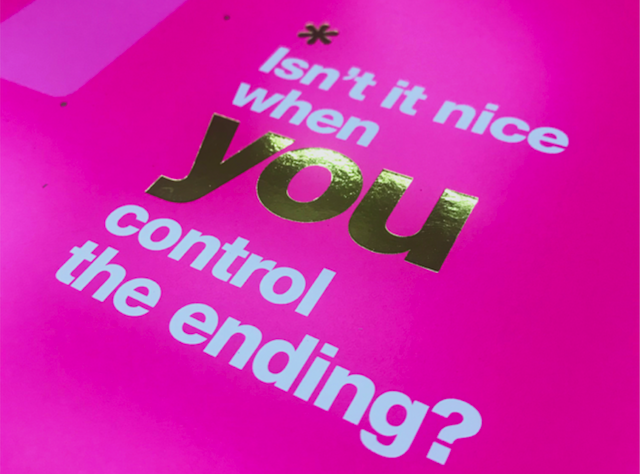1. “People talk in stories, and so must we.” –Luke Sullivan, Hey Whipple, Squeeze This: The Classic Guide to Creating Great Ads (5th Edition)
So, too, must a brand talk in stories. A brand without a narrative is a brand without an identity, without a soul.
Sullivan, of course, was talking directly to those who work in advertising, but the truth of that statement transcends industry. Think about it like this: if you take that statement, remove it from the context of advertising, and change “we” to “I,”—People talk in stories, and so must I—you have a fundamental truth about the nature of human connection.
2. “We tell ourselves stories in order to live.” –Joan Didion, The White Album
Narrative is what gives human experience meaning. Narrative is what triggers emotion, and empathy. If you’re moved by a laughing child, it’s not so much because of the act of laughing itself, but the clues that accompany it: the child’s facial contortions, the tickle in her tone, the twinkle in her eye.
These “tells” tell a story.
3. “Researchers have found that the human brain has a natural affinity for narrative construction.” –Benedict Carey, “This is Your Life (and How You Tell It),” New York Times Magazine
We think in story. Joseph Campbell touched on this in “The Hero with a Thousand Faces,” where he fleshed out the “Monomyth,” known more commonly as “The Hero’s Journey”—his idea that the same narrative has been told over and over throughout the ages, from “The Odyssey” to “Star Wars.”
Why do we tell the same stories over and over? Perhaps because the Hero’s Journey is our journey—or how we imagine our journey through life to be: with us as the hero, triumphing over conflict, always with a happy ending.
4. “All stories have a curious and even dangerous power. They are manifestations of truth—yours and mine.”—Vera Nazarian, Dreams of the Compass Rose
This gets closer to the heart of it. Because our brains are wired to process the world through narrative, a well-told story carries enormous power. As marketers, we have a responsibility to tell the stories of our brands with integrity and discipline, to manifest the truth of the human experience. We all have a lifetime of practice at detecting inauthenticity, and even a whiff of it—whether from a story told dishonestly or sloppily—will alienate the consumer.
5. “I wanted people to say, ‘What’s happening in the story right now? Oh! It’s an advertisement!’”—Don Draper, “Mad Men”
The fictional ad man Draper (played by Jon Hamm) is referring to a Clio-winning commercial he conceived for Glo-Coat floor wax, which opens like a spaghetti western in the first half and then makes an unlikely jump into sales pitch for a household cleaner.
Draper hits at the heart of what separates good advertising from bad: A good ad draws the consumer in with a story and makes them forget, if only for a moment, that they’re watching a commercial. More importantly, when the consumer remembers or realizes they’re watching an ad, they’re not angry,
they don’t feel cheated—they’re impressed. And with that, you have their ear.
At Mingo Press, we strive to connect with our customer base through storytelling. It’s why our 2017 marketing campaign is “The Story of Creative Thinkers,” and it’s why we’ve chosen to engage our customers through the power of narrative.
For all the professionals in the creative fields, yours is a story of imagination and achievement.
Here at Mingo, we take that very seriously.
That’s why we have designated teams to work with you and oversee your jobs.
That’s why we invest in printing technologies for color matching and rigorous quality controls.
That’s why we personally bust it every day to help you meet deadlines.
That’s why we’ve built a company specifically designed to make sure your story has a happy ending, every single time.
Brands, like humans, tell stories to live. Our goal at Mingo is to foster a new level of human connection between our brand and our customer base. Because we’re all on the same journey—toward connection, understanding and happiness.



